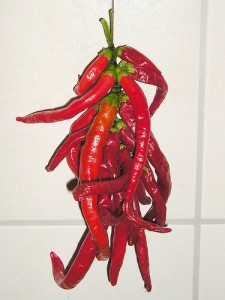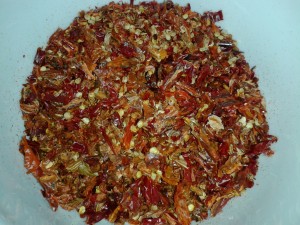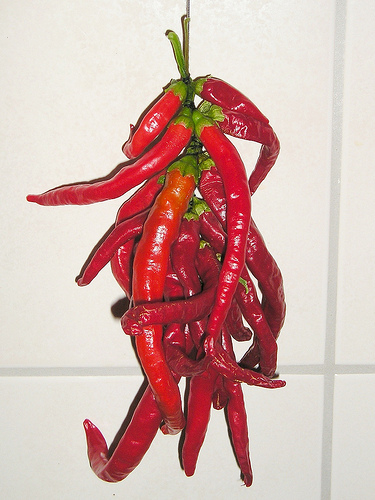
Our chili plants in the herb garden are perennial, meaning the chilies grow all year round. The chilies the plants bear can be bountiful. Seeing the chilies grow in huge quantities is indeed gratifying as it means they can be plucked straight from the garden and added to any dish for some spicy zest. Since chilies cost $15.90 per kilo at the local supermarket, growing our own means we can have as much chilies in our dish as much as we want and whenever we want.
If you grow chili plants and are after some green chilies, don’t wait too long to pick the green ones. Green chilies turn red pretty quickly so if you want mild chilies, don’t wait any further. Chopped green chilies are suitable for salads, curries and certain finger food.
Red chilies are suited for adding zest in plain omelette, stir fry dishes and as a base for cooking fried noodles or rice. Leaving them to grow in abundance in trees for long periods means leaving the chilies to slowly dry and rot. To avoid this, I harvested all the chilies that had turned red and left them to dry on a tray for a few days. On a side note, if time permits, it is a good idea to string and hang the chilies to dry.
Next, I dry fried the chilies in the pan to ensure that they are drained off any moisture.

Once the chilies were dried and cooled, I put them aside and cut them finely with a pair of kitchen scissors. You will notice that the seeds burst out in abundance and this is where your discretion is put into practice. Discard most of the seeds to avoid hot dishes or retain them if you do. Blend the cut chilies in a food processor to produce fine chili flakes.

Dry the fine chili flakes on a tray for a few days to ensure that no moisture is left in them. After that, store the flakes in a sterilized bottle. Now, you can have a supply of chili for up to 4 months. The chili plants can be left dormant till they are ready to bear fruit again. Continuous watering and feeding them with the right nutrients will ensure another round of bountiful harvest.
Related articles


